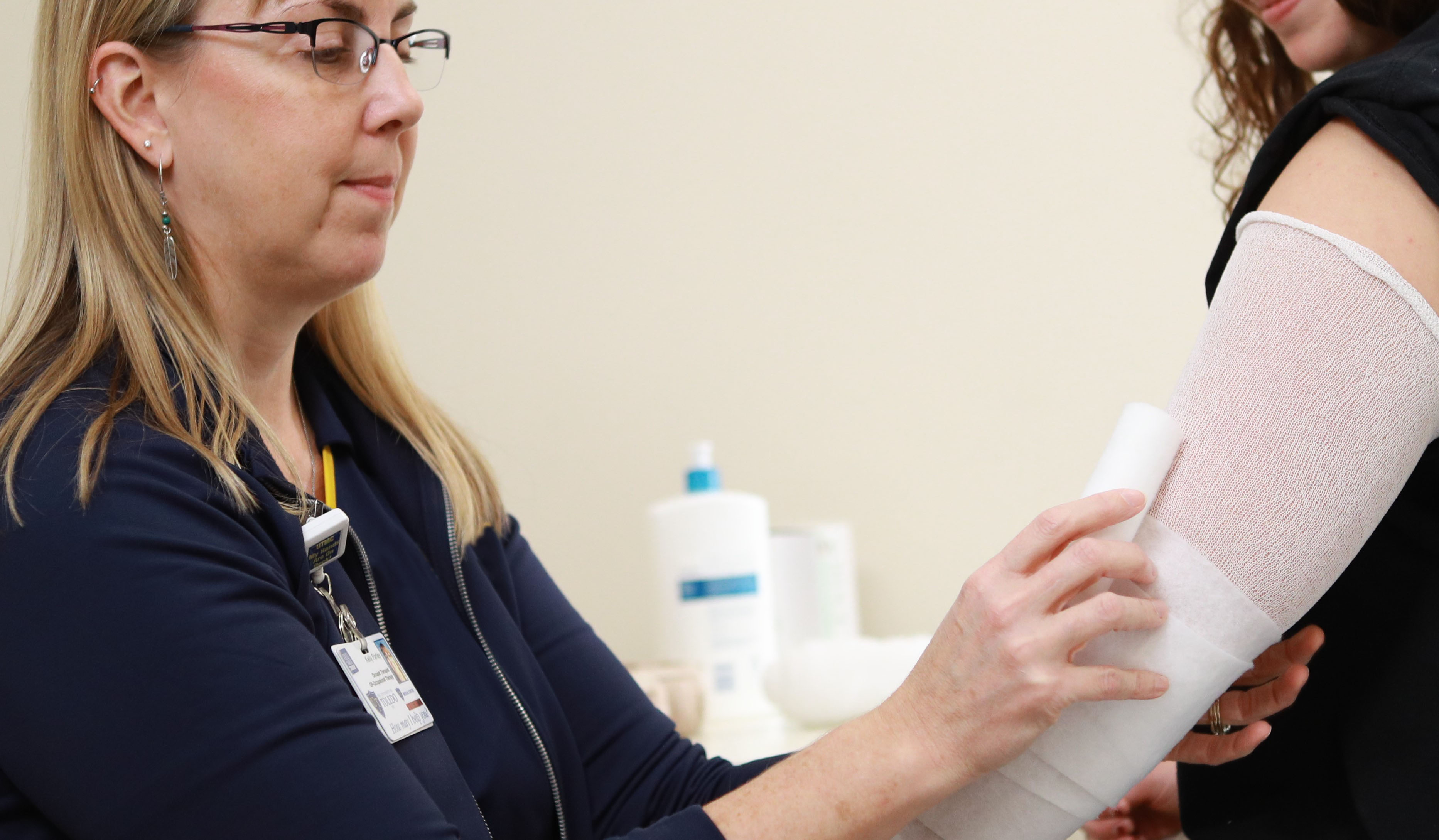Lymphedema Therapy
Get relief from the pain and swelling of lymphedema with the help of our specially trained therapists at the University of Toledo Medical Center.
What is lymphedema?
The body’s lymphatic system carries white blood cells throughout the body to fight infection and drains away substances that cannot be drained by the circulatory system. This process is carried out through special vessels and pathways called lymph nodes. Lymph nodes transport a clear, protein-rich fluid called lymph.
If the lymphatic system is damaged or doesn’t develop properly, lymph can begin to accumulate and cause chronic swelling — typically of the arms or legs. This often painful condition is known as lymphedema.
How do you get lymphedema?
Lymphedema can be caused by a genetic mutation present from birth. But lymphedema most commonly develops after surgery, radiation treatment for cancer, cancer itself or trauma.
Lymphedema is a common complication for cancer patients. To determine if cancer has spread, physicians often remove a patient’s lymph nodes. Without lymph nodes, lymph fluid may not drain. As it accumulates, tissue swells and become painful.
The greater the number of lymph nodes removed, the higher the risk of lymphedema. That’s why oncologists strive to disturb as few nodes as possible during surgery.
Can lymphedema be cured?
No. And there is no way to prevent lymphedema. Fortunately, the right treatments can effectively control pain and swelling.
How is lymphedema treated?
The most common treatment for lymphedema is manual lymph drainage/complete decongestive therapy (MLD/CDT). MLD/CDP is a non-invasive treatment that involves gentle massage of the affected body part. The goal is to improve the activity of the intact lymph vessels and help move the excess lymph fluid to other areas of the body.
After the massage, therapist will wrap your arm or leg with compression bandages. Compression bandaging is a highly specialized technique that utilizes specific short-stretch bandages (not ACE bandages), padding and foam to help the lymphatic vessels empty and prevent the re-accumulation of lymphatic fluid.

Lymphedema therapy at UTMC
The lymphedema therapists at UTMC work closely with you and your physician to design a coordinated, individualized plan of care that meets your specific needs.
Individualized therapy for lymphedema may include:
- Evaluation to determine the proper course of treatment.
- Manual lymphatic drainage to drain the lymph fluid from the affected limb.
- Compression bandaging of the affected limb to reduce the fluid in the swollen tissues.
- Self-care instruction.
- Exercise instruction in flexibility, strengthening and aerobic activities to enhance the lymph drainage.
